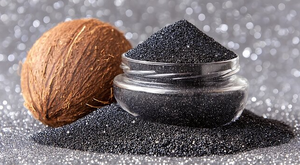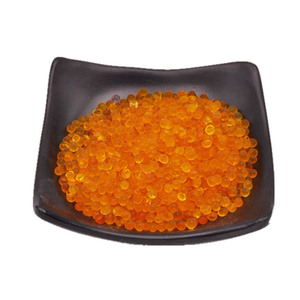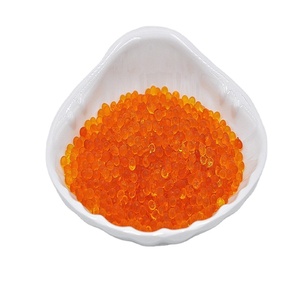
All categories
Featured selections
Trade Assurance
Buyer Central
Help Center
Get the app
Become a supplier

(3400 products available)

































Suppliers provide these types of sio2 1 3mm to buyers in bulk:
Three-mm silica carbide grains in the ceramic grade are often employed for high-temperature applications as a result of their exceptional hardness and thermal stability. These granules are ideal for increasing the wear resistance of ceramic matrices because of their high degree of purity and structural durability. In sectors that depend on advanced ceramics, such as aerospace, power, and engineering, the 3mm size is perfect for delivering the necessary strength and durability.
Three-mm silica carbide granules are suitable for refractory uses. The material's strength at high temperatures makes it a great choice for lining material in furnaces and kilns. These grains provide excellent thermal shock resistance and increase the operational lifespan of refractory systems. This makes it an important material for the metallurgy, furnace, and ceramic industries, who require dependable and long-lasting materials.
Ceramic-grade silica carbide 3mm grains are of high value in the foundry business. Because of its stability at high temperatures, it works well as a replacement for common sand in metal casting molds. Foundries are able to achieve finer castings with a better surface finish because of the grains' hardness and resistance to wear. The grains also help minimize the oxidation of the molds and cores to extend their life while enhancing metal protection.
Ceramic-grade silicon carbide is a manufactured substance created by combining carbon and silicon. A durable material results from the process because of the strong bonds between the silicon atoms and the silicon carbide crystal structure. Grains of silicon carbide are very robust, abrasive, and chemically resistant. High-performance applications in industrial and electronic contexts demand strong materials to withstand severe conditions. For instance, post-industrial silica carbide granules serve as an abrasive, strengthener, and catalyst supporter in ceramics.
At the nano, micro, or macro scale, one of the key characteristics of silica carbide grains is that they can be homogeneously blended into other substances. The materials have a high aspect ratio and are granularly shaped to improve flowability, packing density, and dispersion in composite systems. These inclusions improve the mechanical properties of the host matrix in advanced composite materials, including fiberglass reinforced plastics and resins. The 3mm grains provide structural support, decrease weight, and increase thermal and electrical conductivity in the resin mixes.
These are the industrial uses of SiO2 1 3 mm:
Due to its robustness and light weight, three-mm silica carbide grains serve as major reinforcements in composite materials used in the aerospace and automotive sectors. The grains increase the strength and toughness of the polymer matrix, boosting the materials' resistance to harsh operating circumstances, such as high temperatures and mechanical stresses. Due to improved stress distribution, the composites' overall lifespan is raised because the SiC grains reinforce them further.
In the machinery that cuts into tough materials, silica carbide grains function as abrasive components. These grains maintain their sharpness and resist wear when cutting tool composites encounter high friction and heat. Because of this, the tools cut more efficiently and last longer. Silica carbide grains offer precision and surface quality in industries such as metal machining, material shaping, and tool production that require fine detailing.
Three-mm silica carbide grains are formulated into advanced coatings for protecting surfaces from wear in high-impact situations. These coatings are applied to machinery parts, including pumps, turbines, and mixing equipment, found in mining, chemical processing, and power industries. The grains form a stiff, textured layer that shields the underlying material from abrasion, increasing the apparatuses' resilience and uptime. The grains help to decrease maintenance costs and expand operational efficiency.
Due to its great surface area and porosity, three-mm silica carbide grains are ideal for industrial filtration systems to remove contaminants from fluids. These grains construct filter media that separates particulate matter and purifies liquids like chemicals, wastewater, and industrial fluids. Because of its chemical resistance and durability, SiC filters are perfect for severe conditions in the chemical sector. Maintenance is infrequent, and filtering is efficient.
Three-mm silica carbide grains help control and reduce static charges on sensitive surfaces in electronic and semiconductor manufacturing. These grains are incorporated into antistatic mats, garments, and work surfaces to dissipate static electricity securely and uniformly. They protect sensitive equipment from electrostatic discharge (ESD), which can undermine important electronic components and circuits during the production process. The silica carbide grains ensure operations run smoothly by preventing contamination in the microelectronics business and preserving product integrity.
Buyers should learn the specs and features of silicon dioxide powder:
There's a variety of quality and safety standards that siO2 must meet in order to work effectively in industrial applications. Below is some information about these standards:
High-purity silica carbide grains undergo processing in which impurities such as aluminum oxide, iron oxide, and metal traces are eliminated to specified levels. This is accomplished through flotation, chemical leaching, and rigorous washing methods. Quality control tests, such as spectroscopy and microscopy, are then applied to confirm that the impurity levels meet industry standards. In high-value manufacturing, such as semiconductor, electronic, and aerospace, this purification ensures material consistency and performance.
The Occupational Safety and Health Administration sets regulations on the handling of silica carbide grains. These rules minimize dangerous exposure to airborne silica dust, which can be harmful to employees when inhaled. OSHA requirements indicate protective PPE, ventilation systems, and service monitoring to maintain workers' safety. These standards contribute to user comfort and security by lowering the risk of respiratory diseases and other silica-related conditions.
According to the American National Standards Institute standards, abrasives, including silica carbide grains, must be carefully graded and categorized according to size, shape, and distribution. Measuring tools such as sieves, particle imaging, and calipers conduct categorization. These criteria guarantee that the grains perform uniformly for designated jobs, whether in refractory materials, abrasives, or abrasives in casting molds and dies. Because of this standards consistency, the foundry, polishing, and ceramic industries can benefit from reliable performance.
ISO 9001 certification assures quality management in silica carbide grain production. This entails thorough inspection and control of the raw material, processing techniques, and final product testing. Tools like particle size distribution. Grading uniformity, shape, and shine are examples of standard examination tools. Adopting the ISO family of standards enhances grain quality consistency and reliability for consumers in various industrial applications.
When it comes to the environmental ramifications of silica carbide grain production, the Environmental Protection Agency regulations concern silica. EPA guidelines control waste management, air quality standards, and the elimination of hazardous substances such as heavy metals and non-recyclable materials. Grains produced under these standards decrease the impact of dust emissions and discharge onto the environment. This is particularly relevant in agriculture, construction, and mining, where silica dust can act as a health hazard. The EPA aims to reduce pollution, extend material life, and minimize health risks with these rules.
While three-mm grains are typically used for cutting, grinding, and polishing because of their tough and sharp edges, they can also be used in unexpected ways, such as coating surfaces to resist wear and tear, as additives in composite materials to increase strength and thermal conductivity, and in agricultural applications as a soil amendment to improve drainage in heavy soils.
The three-mm grains are more durable than the typical abrasive because they are cubic in shape. They last a long time and don't break down often, creating less debris. They also produce less heat because of efficient cutting. This makes them ideal for delicate materials that can warp or damage easily during the process.
Three-mm grains are primarily neutral to the environment. Nonetheless, measures are taken to ensure that the mining and processing of raw materials used to manufacture the grains do not contribute to ecological destruction, air pollution, or water contamination. Also, rules developed by the EPA currently limit these effects.
No, even if both have silica in their names, they differ in structure, form, and use. While silica sand consists of natural quartz particles, three-mm silicon carbide grains are synthetic and cuboidal. Silicon carbide is often harsher and has stronger thermal and chemical stability. Silicon carbide grains are suitable for high-performance applications like semiconductor, refractory, and abrasives.
Yes, the three-mm grains can be used for polished finishes since they are uniform and stable. In industries like metalworking, stone fabrication, and glass polishing, finer grits are often employed after the initial grinding phase in order to remove larger scratches and smooth surfaces. They leave behind a uniformly textured surface that is reflective and appealing. Various industries benefit from the polishability of these grains, including aerospace, where precision is essential.